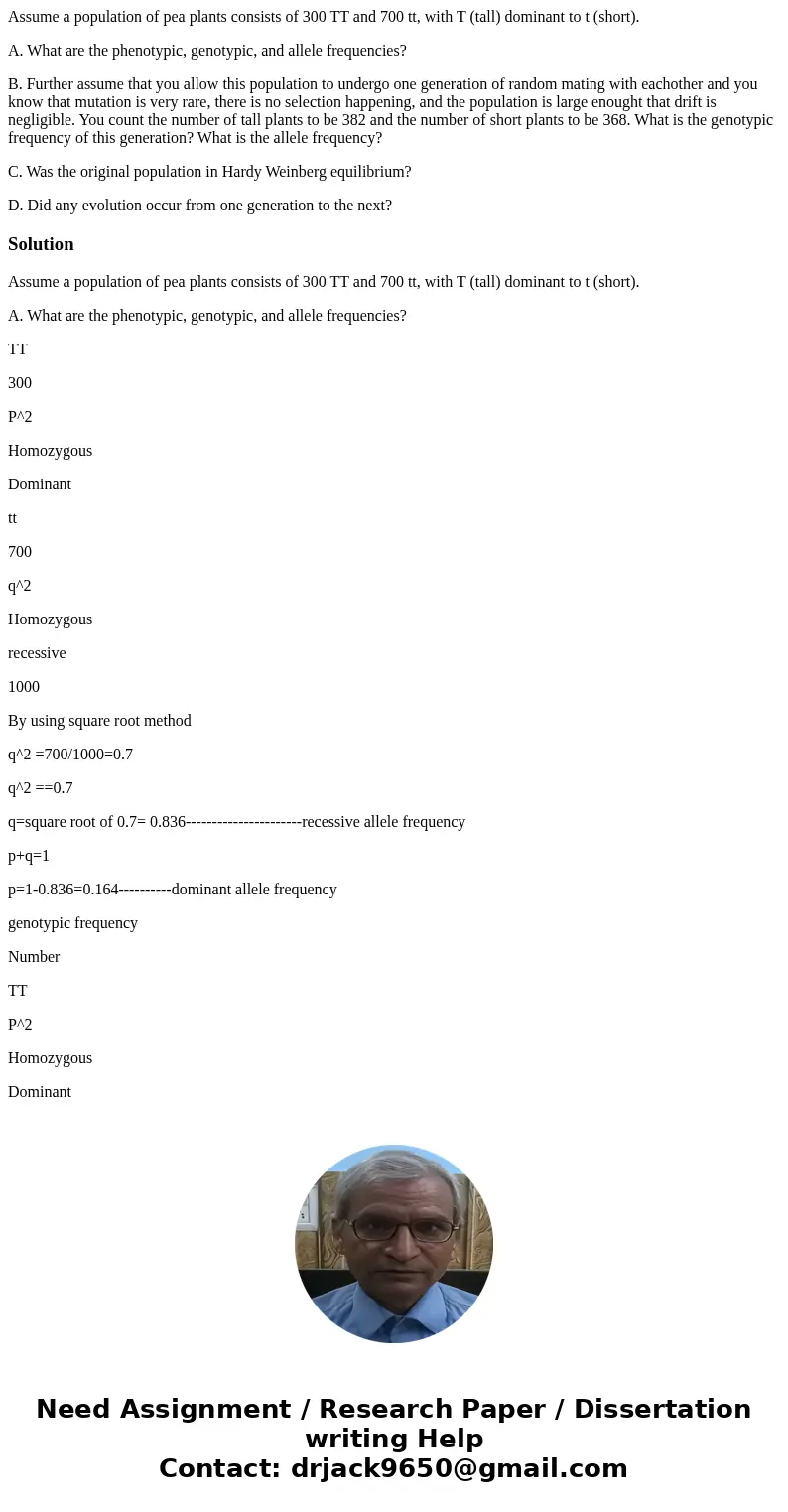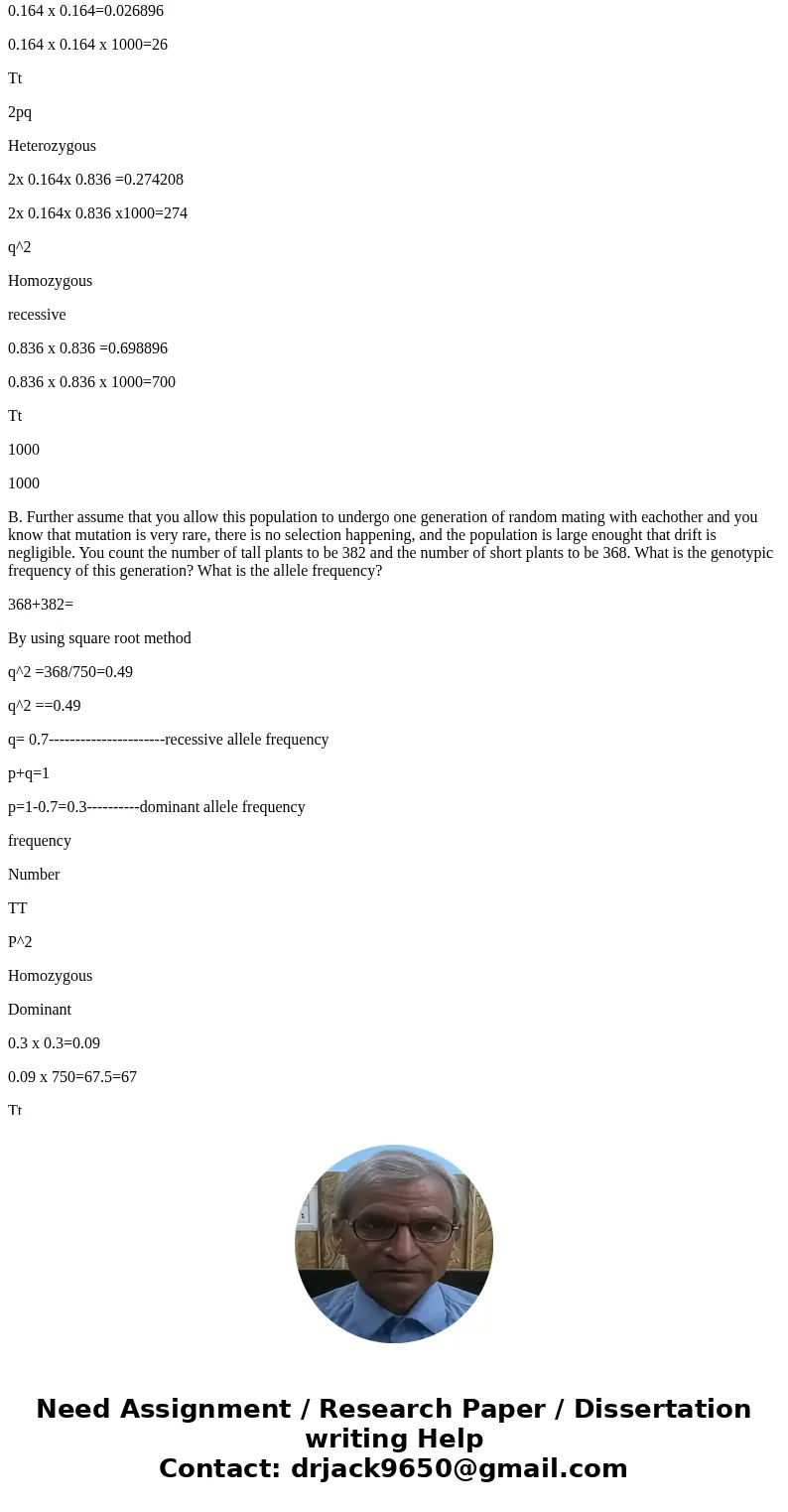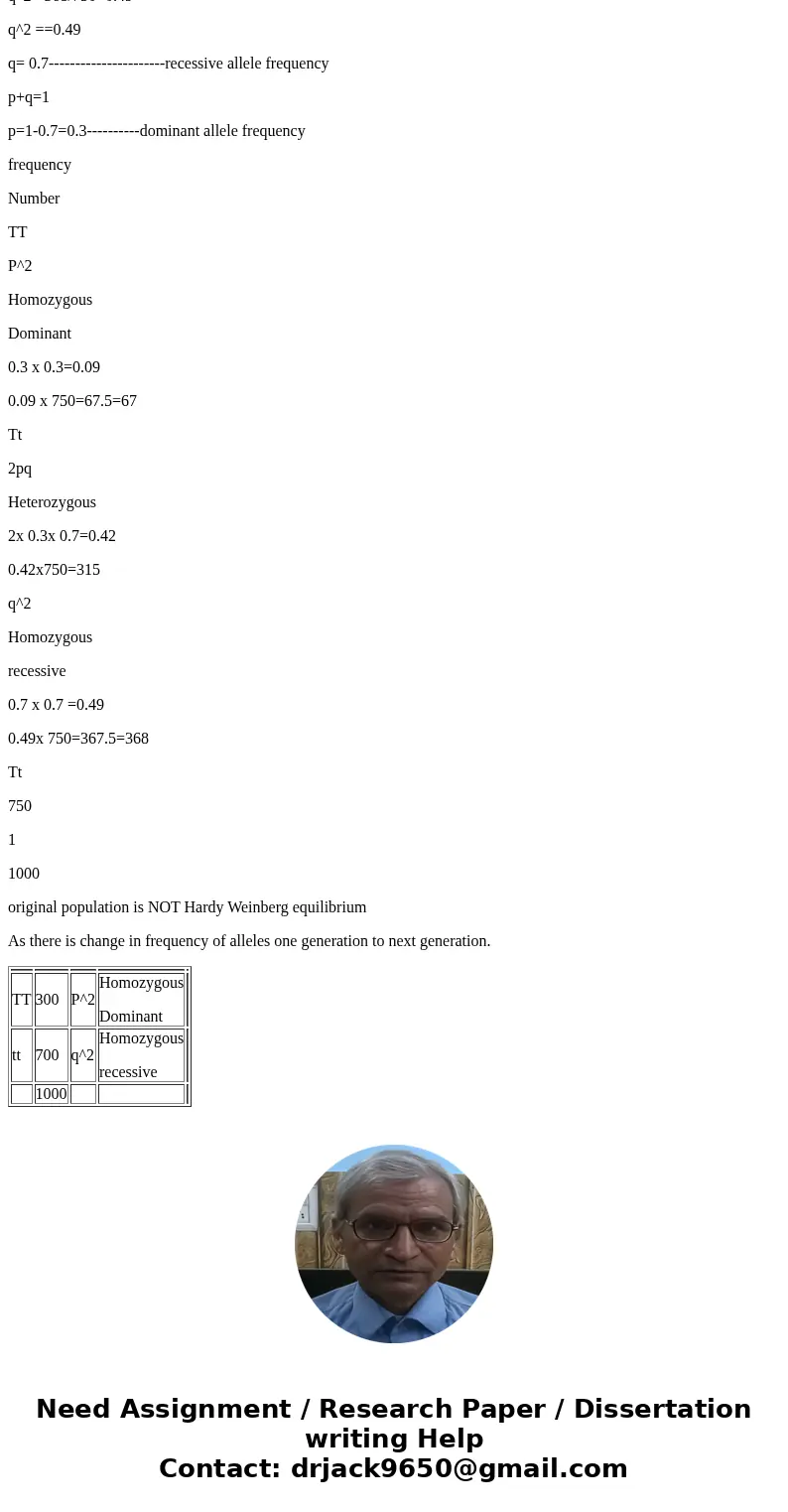Assume a population of pea plants consists of 300 TT and 700
Assume a population of pea plants consists of 300 TT and 700 tt, with T (tall) dominant to t (short).
A. What are the phenotypic, genotypic, and allele frequencies?
B. Further assume that you allow this population to undergo one generation of random mating with eachother and you know that mutation is very rare, there is no selection happening, and the population is large enought that drift is negligible. You count the number of tall plants to be 382 and the number of short plants to be 368. What is the genotypic frequency of this generation? What is the allele frequency?
C. Was the original population in Hardy Weinberg equilibrium?
D. Did any evolution occur from one generation to the next?
Solution
Assume a population of pea plants consists of 300 TT and 700 tt, with T (tall) dominant to t (short).
A. What are the phenotypic, genotypic, and allele frequencies?
TT
300
P^2
Homozygous
Dominant
tt
700
q^2
Homozygous
recessive
1000
By using square root method
q^2 =700/1000=0.7
q^2 ==0.7
q=square root of 0.7= 0.836----------------------recessive allele frequency
p+q=1
p=1-0.836=0.164----------dominant allele frequency
genotypic frequency
Number
TT
P^2
Homozygous
Dominant
0.164 x 0.164=0.026896
0.164 x 0.164 x 1000=26
Tt
2pq
Heterozygous
2x 0.164x 0.836 =0.274208
2x 0.164x 0.836 x1000=274
q^2
Homozygous
recessive
0.836 x 0.836 =0.698896
0.836 x 0.836 x 1000=700
Tt
1000
1000
B. Further assume that you allow this population to undergo one generation of random mating with eachother and you know that mutation is very rare, there is no selection happening, and the population is large enought that drift is negligible. You count the number of tall plants to be 382 and the number of short plants to be 368. What is the genotypic frequency of this generation? What is the allele frequency?
368+382=
By using square root method
q^2 =368/750=0.49
q^2 ==0.49
q= 0.7----------------------recessive allele frequency
p+q=1
p=1-0.7=0.3----------dominant allele frequency
frequency
Number
TT
P^2
Homozygous
Dominant
0.3 x 0.3=0.09
0.09 x 750=67.5=67
Tt
2pq
Heterozygous
2x 0.3x 0.7=0.42
0.42x750=315
q^2
Homozygous
recessive
0.7 x 0.7 =0.49
0.49x 750=367.5=368
Tt
750
1
1000
original population is NOT Hardy Weinberg equilibrium
As there is change in frequency of alleles one generation to next generation.
| TT | 300 | P^2 | Homozygous Dominant | |
| tt | 700 | q^2 | Homozygous recessive | |
| 1000 |



 Homework Sourse
Homework Sourse